
How to Choose Pad Mounted Transformer?
Table of Contents Selecting the right pad-mounted transformer requires careful consideration of several critical
ELECTRIC, WITH AN EDGE
Mobile Transformer Substations refer to a substation with complete equipment installed on a mobile carriage, which contains the same equipment as a land-based substation, such as a mobile main transformer. But the Portable Substation is smaller in size and has better mobility and convenience.
Preferably; Mobile Substations, due to their small size and travel capabilities. In this article, DAELIM, a Mobile Substation Manufacturer of more than 15 years, will help you get to know more about Mobile Transformer Substations.
But first, it is better to understand what Substations are in general before proceeding to learn the different types of Substations including Portable Substations.
Transmissions, electrical generations, and distribution systems have a substation associated with them. But why? This is because substation transformers like Mobile Transformer Substations have the ability to transform or convert voltage levels from high to low, or vice versa.
Of course, this is not the only function Mobile Substations is capable of. But focusing more on typical substations, these substations can perform various work, which you will get to know everything about as you go deeper in the article.
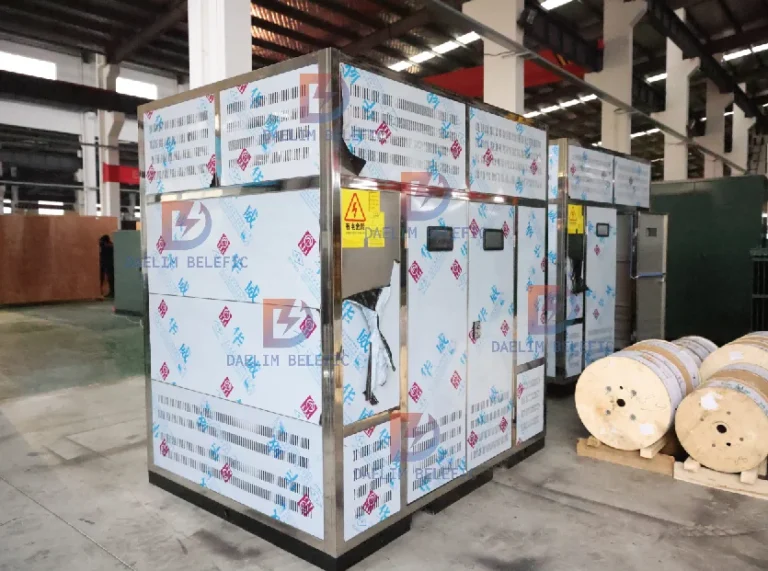
When it comes to the generating station and distribution lines that are connected to the houses or buildings, electricity can pass through several substations at different voltages. Substations can also be considered as electrical receivers, transmitters, transformers, mediums, etc.
Substations can also have power transformers with them, and the purpose of this it change the voltage levels from high transmission voltages to distribution voltages at lower rates. The interconnection of two different transmission voltages can also be adjusted with the use of substations that have transformers.
Substations like Mobile Transformer Substation are usually owned by electrical companies, distributed from Mobile Substation Manufacturers. These can also be owned by big companies or large industries that use them for commercial use. Normally, they have to ask permission first from the nearest electrical company to ask if they are allowed to operate such power.
Generally, these substations are left unattended since they rely on Supervisory control and data acquisition or S.C.A.D.A, for remote supervision and control. This is a perfectly safe method, as long as proper maintenance and regular monitoring are done.
Back in the early days of the development of substations, distribution systems were once used as a grid. But when the time came that central generation stations or C.G.S were expanding, what happened with small generating plants is that they were now used as distribution stations, instead of their original purpose.
This allowed them to receive energy supply were from larger plants, which they no longer had to use their generators. Unlike today wherein you can connect multiple power stations to a single substation, this was not the case back then.
Operators were only able to connect one substation to a single power station. The generators at this time were normally housed or fenced, and they were considered subsidiaries of the power station.
Now that you know what substations are, and a little about their history, It is now easier to understand their components or parts. Yes, substations; like any other electrical device, have parts in them.
Although some electrical devices have no moving parts in them like the DAELIM Single-Phase Overhead Transformer. However, this does not mean they are completely empty inside. Yes, they are static devices, but they still have components in them; although not moving.
Substations usually consist of Mobile Transformer . Along with that are protection, switching, and control equipment. You can easily find these components at smaller substations like Mobile Substations.
But for large substations, these big electrical devices utilize circuit breakers to protect the substation from overloading currents and as well as short circuits that can happen on the network unexpectedly.
What about smaller stations? For instance, smaller distribution substations or mini distribution substations may use recloser circuit breakers, which is another type of circuit breaker that completely shuts off electric power when complications or problems occur. It serves the same function as normal circuit breakers but the recloser circuit breakers can be automatic.
Substations typically have no generators with them, this is why you would usually have a power plant or power plants nearby. Aside from power plants, substations normally have other electrical devices surrounding them, such as reactors, capacitors, voltage regulators, etc.
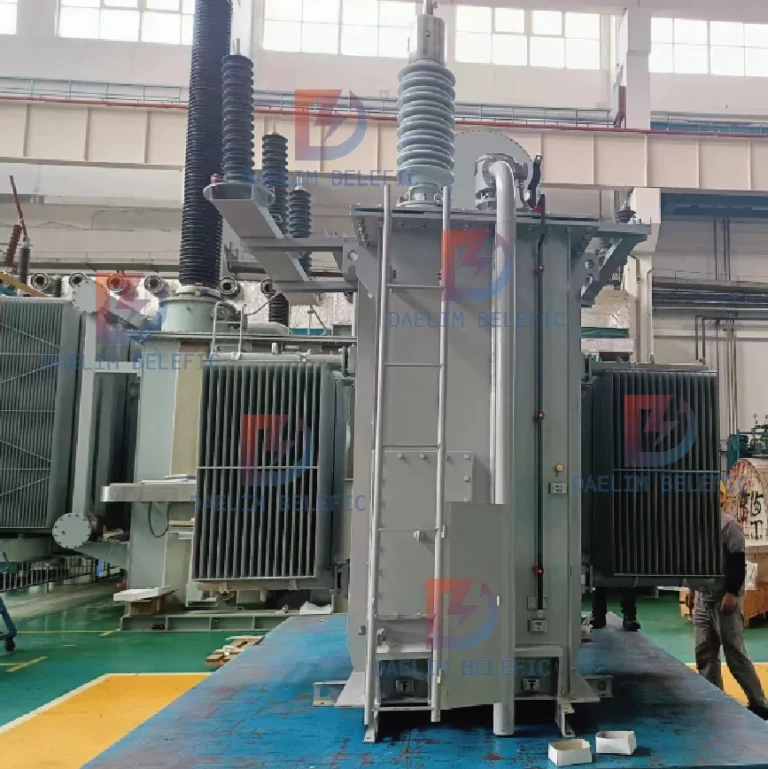
Substations can be seen on the surface of the earth, but what you probably did not know is that they can be located underground as well. Yes, they can be located underground for easy wiring, safety purposes from the public, and not safe from outside disturbances.
For substations that are on the surface, these substations are usually housed in a metal fence to keep people away, and animals as well. Substations can be located indoors too, but with more safety precautions.
They are in urban areas well, this is to keep the noise of the Mobile Transformer s to a low level. However, to protect the switchgear from extreme climate or pollution conditions. A grounding or earthing system must be designed.
The ground potential rise, and gradients in potential rise, and gradients in the potential during a fault are calculated for the safety of passers-by whenever a short circuit in the transmission system occurs.
Earth faults substations can create ground potential rise as well. The currents flowing in the ground whenever there is a fault can cause objects to electrocute you if you are in contact with it.
The fences that are surrounding the substation are grounded properly. This is to prevent the hazard from reaching people or pedestrians that are passing by.
One of the biggest issues of working with a power engineer is the reliability and the price of the substation and its maintenance. Mobile Substation Manufacturers or substation manufacturers will make sure that there is a good balance between the two elements.
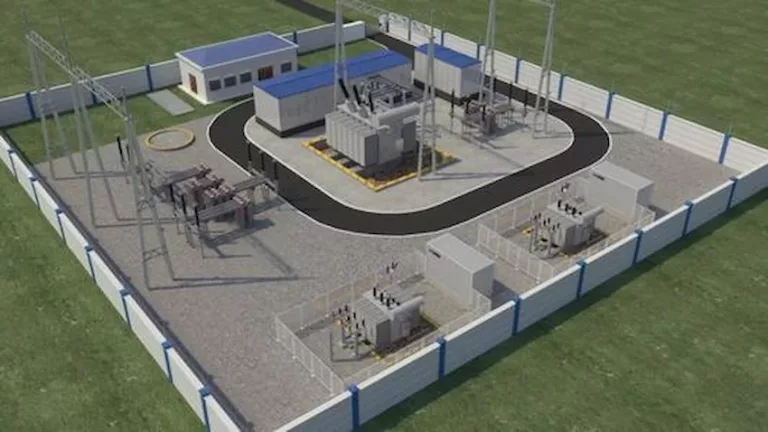
Of course, before purchasing a substation, you will need to allocate the substation in the proper location. In this section, you will learn what and other outside elements you should consider first before purchasing a Mobile Substation or any other substation.
There are several factors you should consider when determining the right area for your substation. Including if the land area is sufficient, are there any possible outside disturbances in the location, proper access, and many more.
When it comes to sufficient land area, clearing the area of any elements that can disturb the substation is a must. There must be a clear path for other electrical devices like Mobile Transformer s for better access as well.
Since substations are commonly used in urban areas, if you have the same location for your project, then it is expected that land there can be expensive. Gas-insulated switchgear is a great deal-breaker for this concern because this helps you save money in urban area applications.
Substations that are in coastal areas are commonly affected by natural calamities such as floods and storms. This setting requires your substation to be elevated to prevent surges from happening. The site of where your substation will be placed must also have room for expansion, this is because load growth or planned transmission additions take space as well.
Some factors you should consider are the environmental effects as well like noise, drainage, road traffic, etc.
Make sure to align the substation that is central to the distribution area. This is to serve the site. The site should be secure from passers-by and animals as well. This is to protect civilians from dangerous or life-threatening shocks. Another reason is to keep the electrical system operating without unwanted vandalism that can easily cause the substation to malfunction.
Now that you know where and how to locate your substation, it is time to understand its dynamics. A one-line diagram should be prepared first before proceeding with the substation layout. This shows the switching and protection arrangement of the substation.
In addition to that, this includes the supply lines and transmission lines. This is a common practice by electrical companies for safety purposes. This goes along with the principal elements arranged as well that are laid in a similar way to how apparatuses are arranged in a station.

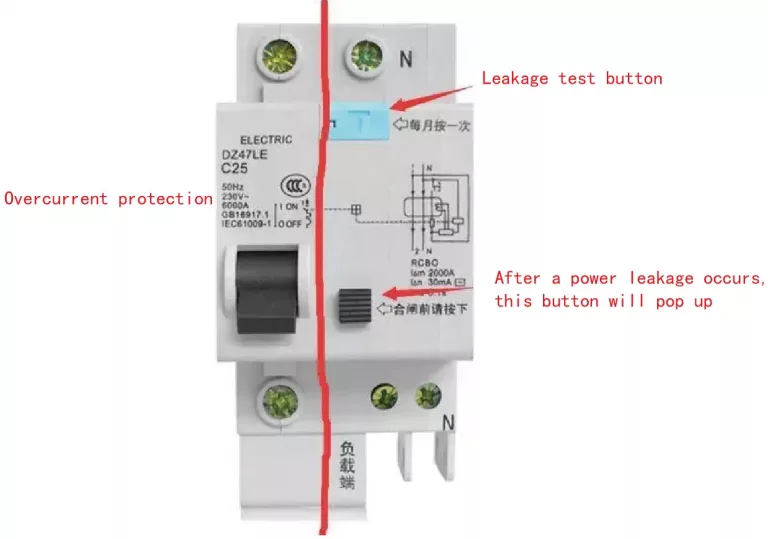
One of the common designs of this is that it has a disconnect switch along with a circuit breaker. However, this is always not the case, with either a switch or circuit breaker is present. They are not considered necessary, but they can be of help.
This is because a disconnect switch is responsible for providing isolation. It may lack the ability to interrupt load currents but it certainly has no problems with providing isolation.
On the other hand, the job of the circuit breaker is to give protection to interrupt or cut off currents automatically, and they can also be used to switch loads on and off, which is another great function of the circuit breaker. They may be small, but they sure are versatile for their size.
Circuit breakers can cut off a line that has power flow in the direction that where it is not supposed to be flowing. In the case that there is a large fault that flows through the circuit breaker, current Mobile Transformer s will be able to detect this.
The magnitude of current transformer outputs can actually be used to trigger the circuit breaker, which results in a disconnection of the load that is being supplied by the circuit breaker from its feeding point.
This then goes for isolation for the fault point from the rest of the system. This allows the system to continue to operate with little to no impact at all. The switches and circuit breakers can also be located locally or within the substation. But electrical companies or you, do have the choice of supervising it at a control center.
The overhead transmission lines can cause insulation failures with lightning and switching surges. The role of line entrance surge arrestors in this is to protect the substation. There is also an insulation coordination study that is carried out to ensure minimal equipment failure.
After the switching components, the lines are then given voltage can then connect to one or more buses. These are usually in a set in multiples of three is the common form since three-phase distribution transformers are commonly used worldwide.
The arrangement of these electrical devices (switches, buses, circuit breakers, etc.) is being used to affect the reliability of the substation, as well as the cost. Major substations usually have a bus that can help them when a failure occurs in the circuit breaker. This could be a double, bus, ring bus, etc.
Moreover, other parts of the substation will be de-energized from this, which you can then proceed to the maintenance and repairs. These can have minimal switching provisions, the smaller, the lesser it will be.
Now that you have your buses ready for different levels of voltages, the transformers in the area may be connected between various voltage levels. Once again, these will require circuit breakers in case of short circuits or faults.
Along with this, substations can have control or circuitry that is needed to command different circuit breakers to open. This is to be sure when there is a failure of a component that requires maintenance or replacement.

During the early stages of the development of substations, the way it was operated was mainly through manual switching or adjusting the equipment, and through a manual collection of data for load, abnormal circumstances, and energy use.
As time went on, the distribution networks got modified to a point that they became more complex. It was then considered economically necessary to automate the supervision and control of substations.
This allows better coordination in case of emergencies and lower operating costs. There were efforts made to remote control substations through communication wires that run alongside power circuits.
As mentioned, the S.C.A.D.A mainly consists of fiber optic cables, wired remote control circuits, power-line carries, and microwave radios. The development of microprocessors is used for an increase in the number of points that could be controlled and monitored.
Nowadays, standardized communication protocols are utilized to enable several intelligent electronic devices to communicate with one another and supervisory control centers. One of the elements of smart grids is distributed automatic control at substations.
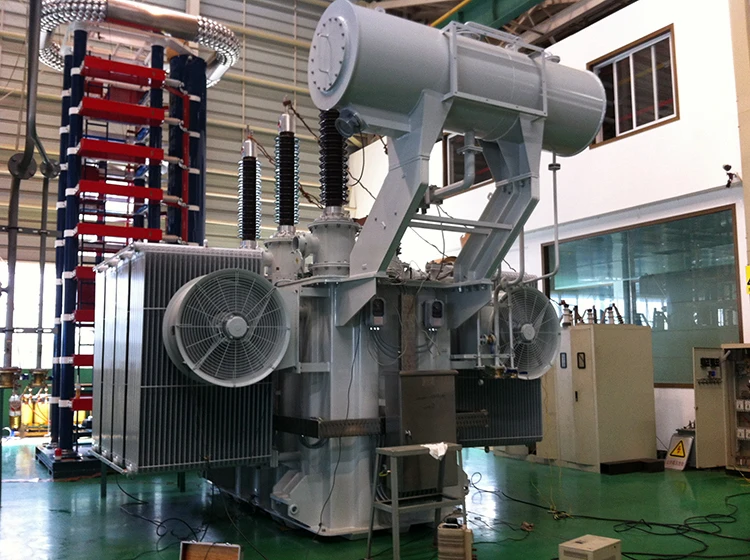
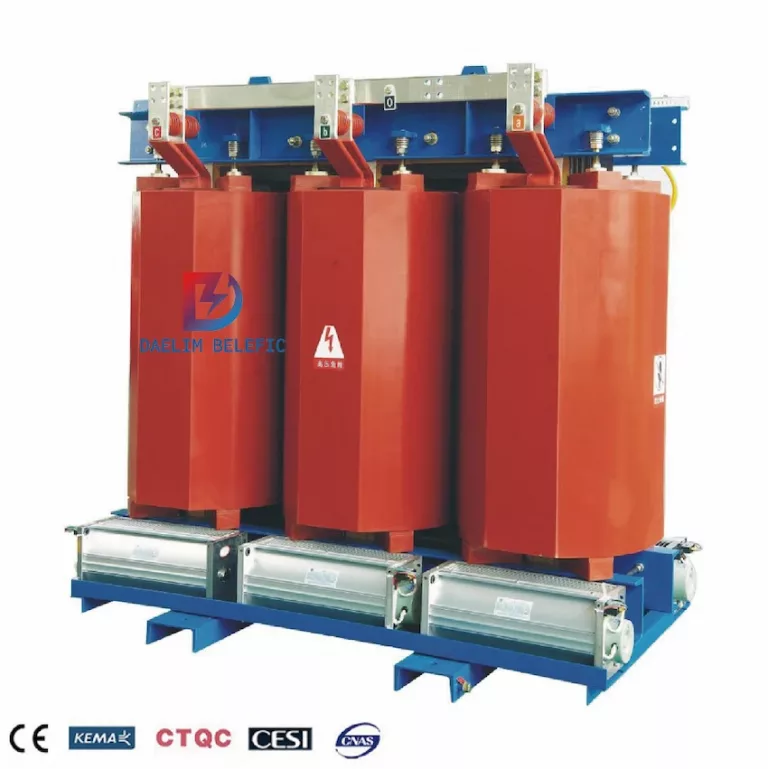
What’s The Difference Between Dry-Type And Oil-Immersed Transformers?
Of course, large substations and even Potable Substations need to have a cooling medium to avoid overheating and malfunctioning. Parts like the transformers, circuit breakers, switches, etc. are all linked to air-insulated bare conductors that are hanged on support structures.
The air space that is required will increase along with the system voltage. This includes the lighting surge voltage rating as well. But for medium-voltage distribution substations, the switchgear to be used will be metal-enclosed with no live conductors exposed for safety reasons.
In terms of high or higher voltages, gas-insulated switchgear will be more appropriate and efficient as a cooling medium. This reduces the space that is required around live buses. Moreover, this setting does not use bare conductors. Instead, these devices use buses and other apparatuses that are built in the pressurized containers filled with sulfur hexafluoride gas.
This gas is known to have a better insulating value compared to air, enabling several dimensions of the apparatus to be mitigated.
For different electrical devices, they use transformer oil or mineral oil, polymer insulators, porcelain, etc.
Each substation may have a lot of unique characteristics with different components. For instance, outdoor substations that are above the ground or levitated have utility poles, metal towers, and metal structures.
In the case wherein you have the luxury of space while not giving the appearance of the substation a big value, steel lattice towers give support for transmission lines and electrical devices. It is worth noting that lattice towers are low-cost.
Low-profile substations, which Mobile Transformer Substations also be considered as one, may be specified in suburban areas (if appearance matters).
For Indoor substations, they can have gas-insulated switchgear but only at high voltages or metal-clad switchgear at lower voltages. However, this does not pass the fire code of most buildings, which means that gas-insulated switchgear may not be allowed in some areas, especially crowded buildings.
These substations can be finished outdoors for better camouflage in the area. Most substations are generally outdoor substations that are covered with a metal enclosure. Each item of the electrical equipment is also located near one another to generate a smaller footprint size of the entire substation.
Like any other electrical device, substations back then were mainly focused on adjusting voltages and distributing them. Now, there are several types of substations that exist that have to serve different functions and purposes.
Below are some of the popular types of substations.
You probably heard of step-up transformers. Step-up transformers are transformers that have the ability to increase or step up voltage levels from low to high. For step-up substations, this type of substation gets its power supply near a facility.
This type of substation makes use of power transformers that preferably are powerful or large. The purpose of this size being used is to enhance the voltage levels for transmissions to remote locations.
This substation also gets its power transmission with the use of a transmission bus to the transmission lines. Step-up substations have the ability to knock receiving or incoming power that is collected from the generation plant.
The power that is received can be used to supply power to the operation of the electrical devices in the plant. In addition to that, this substation also consists of circuit breakers for safety purposes, and transmission circuits for switch generation as well.
In general, the step-down substation is the complete opposite of step-up substations. This type of substation has the ability to connect different parts of the network as well that are a source of sub-transmission lines or distribution lines.
The step-down substation also has the ability to change transmission voltages to sub-transmission voltages – usually at 69kv. These converted voltage lines will provide a source for distribution substations.
There are even cases that power is tapped from the transmission lines to make use of an industrial capacity. If not, the power will be redirected to a distribution substation.

Mobile Substations have various names, but generally; this type of substation is a substation that can be transported from one place to another. Yes, this substation has wheels on them. These may be Potable Substations but they still consist of a transformer, breakers, and other electrical devices. The buswork is mounted on a semi-trailer that is designed to be pulled by a truck.
In addition to their design, Mobile Substation Manufacturers specifically made this substation this way for travel purposes, and they are used for temporary backup whenever there is a time for a calamity or natural disaster.
This type of substation is also rated lower compared to regular substations than permanent installations. They can be built in several units as well.
Below is where you will find DAELIM’s best-selling Mobile Substations:
Product Specifications:
High Voltage
Low Voltage
High Voltage Tap Range
Connection Type
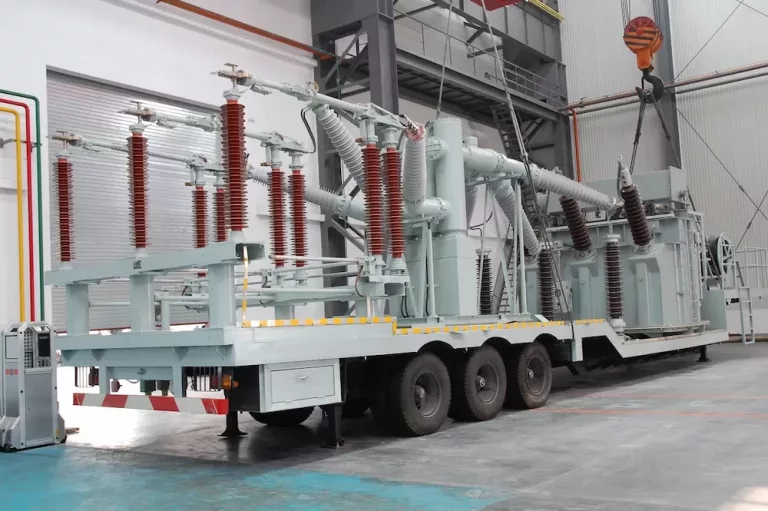
Since mobile substations are commonly used for temporary applications (if not settled in one place) wherein a transformer or a substation is needed, the transformer will be mounted on a trailer that includes high voltage and low voltage protectors like circuit breakers and as well as reclosers.
Mobile substations or portable substations, in general, are mobile power supply centers, and they are often seen at places that are affected by natural disasters such as floods, fires, etc. They can also be used for unexpected incidents that are caused by a power outage. However, one indoor or outdoor substation will not be sufficient for the power supply and will not be economical.
Mobile substations are also used when the main substation is going under maintenance, so as to continue electrical operations going.
A lack of space for constructing an outdoor substation is also another case wherein portable substations come in handy. Although small, they are still capable of providing electricity for large electrical consumption.
In addition to that, mobile substations can also be used to quickly restore electrical service at a time of an outage that is caused by natural disasters such as storms or typhoons. Temporary service during the construction of permanent establishments is also another case portable stations can help.
Lastly, you can use this type of substation for alternate power service during maintenance.
Product Specifications:
High Voltage
Low Voltage
High Voltage Tap Range
Connection Type

The DAELIM 220 kV (kilovolt ampere) mobile substation is excellent for easy travel and power supply. This DAELIM model contains a new generation transformer with both domestic and foreign and advanced technology that features low discharge, low electrical loss, low noise, strong protection against short circuits, etc.
Amount of local discharge
Noise
Power loss
Reliability:
One of the main differences between converter substations is their association with HVDC converter plants and traction currents. These substations normally contain power from electronic devices for the purpose of changing the frequency of the current. This converts from alternating to direct the current or the otherwise.
In the early stages of the development of converter substations, the function of rotary converters was to change the frequency to interconnect two systems. However, this is rare nowadays.
Customer substation is a common type of substation that operates as the major source of power supply for one house, building, or client. This type is customizable as well since the requirements highly depend on the purpose of the customer.
System substations include huge amounts of power. This type of substation only offers no power transformers while other electrical utilities do voltage exchange as well. Normally, this substation supplies the end-points to the distribution lines.
These are created from switchyards, and they are essential for long-term consistency. On top of that, these substations are very costly to build, and the same goes for their maintenance and care.
Collector substations are normally found in distributed generation projects. This could range from wind farms, photovoltaic power stations, etc. This substation is similar to a distribution substation but the power flow goes in the opposite direction.
For instance, from several wind turbines or inverters all the way up to the transmission grid. In a normal setting, the economy of the construction of the collector system normally operates at 35 kV but some collectors can be around 12-15 kV.
The collector substation can also provide power factor corrections if needed. There are even cases where collector substations can have an HVDC converter station.
Collector substations are also present in power plants. Specifically, thermal power plants or hydroelectric ones. In this setting, power is normally collected from nearby lignite-fired power plants.
If there is not a need for a transformer to increase the voltage to transmission levels, then the substation can be used as a switching station.
Speaking of switching stations, this type of substation is a substation without a transformer that only operates at a single voltage level. They can be used as collector substations and distribution substations as well. Meaning, it is just as versatile as the other substations above, even if it does not have any transformer.
They can be used for switching currents to backup lines or for the purpose of parallelizing circuits just in case there is a failure in the system.
Switching stations can also be considered switchyards, and they are commonly placed at an adjacent angle to a nearby power station. In this setting, the generators for the power station supply their power towards the yard and to the generator bus on one side of the yard.
The transmission lines also take power from a feeder bus on the side of the yard. One of the important functions that are performed by substations is their switching capabilities, this is the connection and disconnection of the transmission lines or other electrical components to and from the system.
Switching can be planned or unplanned. For unplanned, these are usually to stop failures from further complicating the operation. Transmission lines are required to be de-energized for proper and safe maintenance, or for new construction.
For instance, adding a transmission line to a transformer. This is applicable for removing transmission lines as well.
To maintain the reliability of supply, electrical companies are trying to modify keeping the system operating at the same time doing maintenance. All the work that is performed should be done while the system is operating.
Aside from those types of substations, there exists a smaller version among those types above, which are mini substations. For starters, mini substations are basically the smaller version of typical big substations.
Mini substations are also known to have a lower kilovolt-ampere rating compared to the normal substations. But still, mini substations can still be used in electrical generations, distribution systems, and even for transmission purposes.
630 kVa Mini Substation and Miniature substation Manufacturer – Daelim
Despite their small size, these substations are still capable of performing what transformers do, which is to transform or convert different levels of voltages. From high to low, or low to high.
When it comes to the flow of electrical power, this can still pass through mini substations – even at different voltage levels between the station of where it gets its power from, and the buildings that are connected.
Mini substationsalso contain a transformer for the aforementioned purpose of adjusting voltage levels. From distribution voltages to transmission voltages or vice versa. In addition to that, adjusting the voltage loves at the interconnection of two different transmission voltages can also be adjusted with the use of mini substations.
Although small, these electrical devices are still professionally handled by electrical companies, and as well as big industries. But for consumers, they can be owned for commercial purposes as well but with permission from the nearest electrical company and authorities. Usually, mini substations can be controlled under remote supervision.
When it comes to transmission substations, this type of substation allows two or more transmission lines to be connected. This application is great for transmission lines that have the same level of voltage. In such cases, substations consist of high-voltage switches that enable transmission lines to be either isolated or connected for the purpose of fault clearance or maintenance.
Transmission stations have transformers to convert between two transmission voltages as well with the help of power correction devices like reactors and capacitors. Large transmission substations are able to cover large areas with different voltage levels but along with many protective electrical devices.
Distribution substations work similarly to distribution transformers. Basically, they transfer power from the transmission system to the distribution system of a certain area. However, it is considered uneconomical to directly connect electricity consumers to the transmission’s main network. But if they are using large amounts of power, then it is reasonable.
Usually, the purpose of that would be to reduce the voltage to more suitable levels for local distribution.
ABB Distribution Transformer Manufacturer – Daelim
With that said, the input for a distribution system would normally be two transmissions lines, but sub-transmission lines are compatible as well. For instance, 180 kV, or whatever is available in the area.
The output will consist of numerous feeders. Distribution voltages are normally medium voltage at around 2.4 kV and 33 kV, but this depends on the size of the area being served, as well as the practices of the local utility.
The feeders also go along with the streets overhead, or underground and the power distribution transformers are near the client’s area.
In addition to the converting and transforming of voltages, distribution substations will be responsible for isolating faults in the transmission or distribution systems. Generally, distribution substations are the endpoints of voltage regulation. They can also be utilized in long distributions but voltage regulation equipment should be installed along the line.
For downtown areas (in large cities), the substations in these areas mostly distribution substations with additional modifications such as high-voltage switching. This includes backup systems on low-voltage sides.
At this point, you can definitely tell that substations are overall versatile. This is one of the reasons why they are in high demand.
To summarize, below are what substations are capable of, but not limited to:
Since substations are in high demand, it is expected that the supply is low. This is why a lot of consumers, businesses, and electrical companies get low-quality substations nowadays which is a bad investment because cheap substations are not made with sustainable components-making them unreliable.
This is why choosing the right manufacturer is important since the right manufacturer will provide you premium substations at fair quotes with the best services. Below are factors that can help you determine whether or not the manufacturer you are interested in is legitimate.
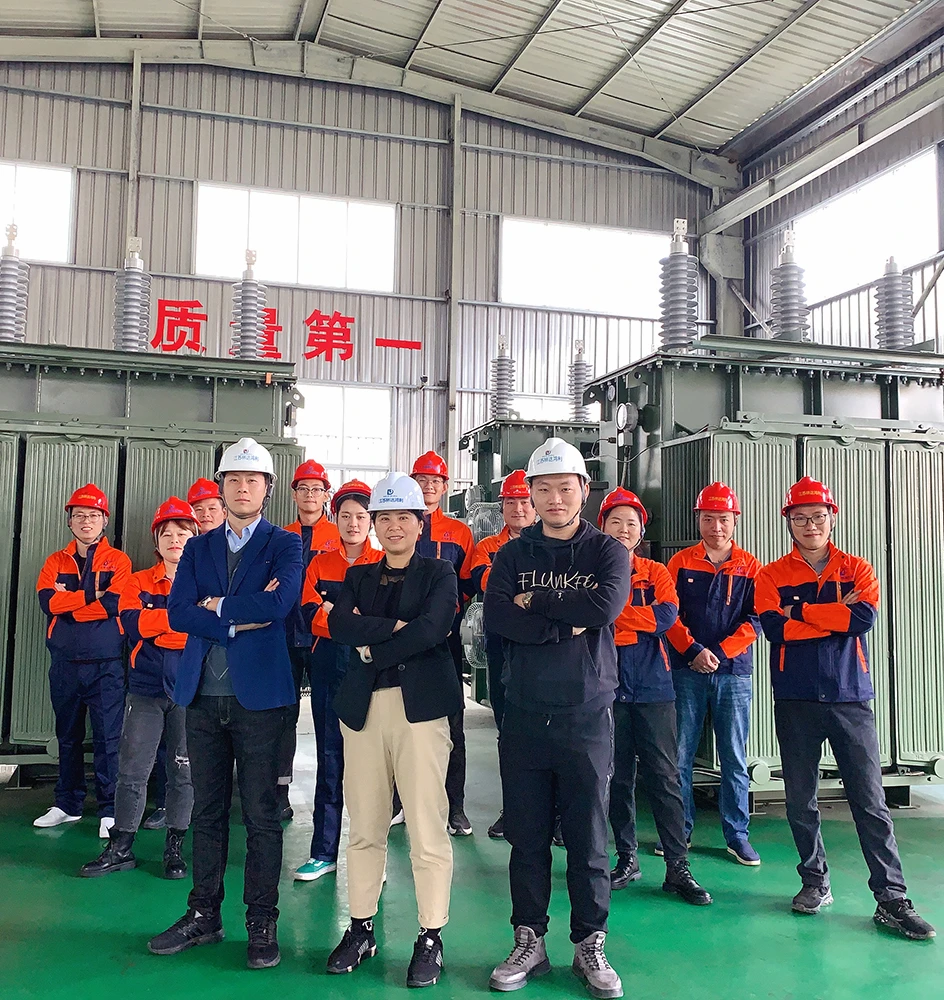
You can look at a manufacturer’s background by going through their website. See to it if there is a section on their website that reveals their company story. This alone can help you determine if the company is credible enough to be operating.
You will most likely see the company’s products, roadmap, history, and certificates (if there are any).
Electrical companies or substation manufacturers also include in their website factory tours to show how they focus more on quality than quantity. This endeavor is great for showing more credibility in the company’s brand.


Of course, customer service is one of the factors you should look out for. You can check this by contacting their customer support line. The faster the reply, the better. However, you should not only rely on this factor as some low-quality manufacturers or scammers are only good at talking but have no product knowledge.
You must check the reviews of the company first before even planning a purchase decision. This saves you time from going through their entire website. If the majority of the reviews are bad, then it is best to stay away from that company or manufacturer.
Oftentimes, primary grids and substations are confused because these can be individual electrical devices. However, there is a type of substation that is called a primary grid substation as well.
This type of substation is manufactured at load centers that are suitable to be along with transmission lines. On the other hand, distribution substations are only created when transmission line voltages are step down to supply the voltage.
Another type of substation that primary grid substations are usually compared to are industrial substations, which are similar to distribution substations but are manufactured separately for each user.
As mentioned, mini substations may be smaller with a less kilovolt-ampere rating but this does not mean that they are not useful. For instance, mini substations are primarily used on tight spaces that only require low kilovolt-ampere ratings.
They are fairly easy to install, and they still function the same way as substations do. Despite their size and lower kilovolt-ampere rating, they are still essential for electrical generations, distribution systems, and transmissions.
When it comes to using it for Mobile Transformer purposes, these substations are still capable of transforming high voltages to low voltages – vice versa. This means that when it comes to their regular functions, they work perfectly fine just as normal substations do.
Normally, the purpose of Mobile Transformer substations is to step down or decrease high voltages from transmission systems to mitigate the voltage electricity for easy consumer distribution (houses and other buildings). High growth in certain areas also means that there is a need for a supply of electricity.
When it comes to health risks, there is no scientific evidence that you can get harmed from standing near or passing by a substation or mini substation. In short, being close to a substation or mini substation does not pose any threat to your health, unless you bump on it or touch it.
Substations are primarily surrounded by electromagnetic fields that came from their cables and different types of equipment. These are to be treated with extreme caution as these can get damaged easily, leading to malfunction or other worse scenarios.
Overall, no study proves that standing near a Mobile Transformer substation or mini substation can cause health hazards. But despite this fact, substations and mini substations are usually surrounded by a metal fence to avoid outside elements; such as animals and people from touching it.
As you know, substations including mini substations have the capability of transforming voltages from low to high, and high to low – but only to a certain point since substations are not primarily designed to Mobile Transformer voltages. This is the reason why Mobile Transformers exist.
Substations are just alternatives or another electrical device that can transform voltages. Not all substations even contain a Mobile Transformer substation. So, depending on what your project is, you can ask your manufacturer to include a transformer or not.
In this section, you will learn the main advantages and drawbacks of substations. Pay close attention to these details as these can be very helpful in finalizing your purchase decision.
Below are the main advantages of substations:
Over the years, substations have been modified and along with that, different types of substations were invented. This is great since you choose the exact substation that you need for your project. But if you are having a hard time deciding which is right for you, do not hesitate to contact the manufacturer for help.
Rest assured, there are a lot of different types of substations that you can choose from. So, you won’t have to worry about not having the right one. You can even get one with wheels, which are the Mobile Transformer Substations for the convenience of easy transportation.
As you know, substations are capable of doing a lot of things such as regulating voltages from high to low, or low to high, supply power to houses and buildings from long distances, and many more! This is mainly because substations themselves are composed of various electrical devices.
Substations are designed to be the best they are created to do. This highly efficient device is reliable and sustainable. However, there can some cases that it is uneconomical to use. So, be sure that you are operating it right to avoid complications and other costs.
As mentioned, Mobile Transformer Substations enable the substation to be transported and used elsewhere, unlike transformers. This is great if your project involves traveling and temporary use only.
They are small and still efficient. However, they can be more expensive than regular substations at well. But depending on the manufacturer, this can be arranged.
Below are the main drawbacks of substations. If there are any of these drawbacks that bother or conflict with your project, then you might want to reconsider your purchase decision.
The noise from substations is mainly the reason why they are commonly used in urban areas due to the noise it produces that can disturb others from their sleep. But regardless, there are several ways to control this but substations are yet to be modified in reducing the noise it produces.
As you can expect from this big electrical device (including mini substations), regular maintenance or monitoring should be done in order to keep the substation in good condition. A good condition substation is a sustainable one. A sustainable substation results in excellent longevity.
Yes, substations can be expensive, depending on the manufacturer, this is because these electrical devices are composed of various electrical utilities that make them versatile and effective. But if you get the right manufacturer, you can definitely come to an agreement with them.
Since substations are a part of electrical generations and distribution systems, they are considered essential for regulating voltages and distributing power. However, like any other electrical device or utility, substations have their pros and cons as well.
To mitigate this, you choose the various types above, which type of substation you should get for your project.
Should you have any questions or concerns, do not hesitate to contact DAELIM’s team of professionals for immediate accommodation.

Table of Contents Selecting the right pad-mounted transformer requires careful consideration of several critical

The primary function of the pad mounted transformer is to serve as a critical distribution

A pad mounted transformer operates through electromagnetic induction, serving as a crucial distribution component that
When you need to find more than just existing transformers, Daelim’s Transformer Service Center can help you design and produce distribution transformers that meet your unique needs.
We have our own factory and a professional team of engineers, which can design and modify application requirements that meet all your conditions.
ELECTRIC, WITH AN ENGE-- DAELIM BELEFIC
After filling in the contact information, you can download the PDF.